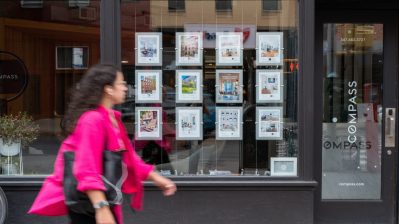A clever Australian public service ad campaign promoting train safety has swept a number of advertising prizes at the Cannes Lions International Festival of Creativity, the world’s biggest annual awards show for professionals in the creative communications industry.
In all, the rail safety campaign took home the most prizes ever awarded to one campaign in the festival’s history.
“We’re thrilled with the outcome of the campaign. The main reason for that is that it starts a discussion about train safety in a way that young people will associate. We’ve deliberately not been threatening or shown graphic imagery,” said Leah Waymark, general manager of corporate relations at Metro Trains, Melbourne’s private rail service.
Metro Trains helped to co-produce the three-minute video, “Dumb Ways to Die,” which was created to teach people to be careful around trains. Since its November 2012 release, the video has racked up more than 50 million YouTube views, sparked several parodies, and even spawned an iPhone game. Not bad for a safety warning advertising campaign.
The animated video shows cartoon blobs making questionable decisions — like keeping a rattlesnake as a pet, selling kidneys on the Internet, getting run over by a train — and then dying, as a result.
A catchy song, written by McCann’s John Mescall and Australian musician Ollie McGill from the band The Cat Empire and performed by Emily Lubitz of Tinpan Orange, plays as the blobs die. The song has charted in nearly 30 countries and hit the top 10 on Apple’s Australian iTunes charts within a day of its release.
The video was co-produced by Metro Trains and advertising agency McCann Melbourne.
“Really the problem we wanted to solve was one that our staff everyday see people taking risks and doing dumb things around trains,” said Waymark. “Rail safety has been an issue for a long time.”
The train service in Australia reports that accidents and deaths have been reduced by 21 percent since the campaign began. Waymark said the campaign had generated $60 million in “global-earned media value” six weeks after it first debuted. While Waymark declined to disclose exactly how much was spent on the campaign, she acknowledged that it didn’t come with a hefty price tag.
“It’s largely been an online, viral campaign supported by some purchased media in the Melbourne area only. It’s a fairly low amount,” said Waymark.
With a slew of advertising awards, viral popularity, and a significant drop in the number of train fatalities, many would argue the viral PSA was worth the cost.
“We see this as very much a long-term game,” said Waymark.
Last year, fast food chain Chipotle won the film award at Cannes Lions International Festival of Creativity with an animated video featuring a cover Willie Nelson cover of Coldplay’s “The Scientist.” That video featured elaborate stop-motion animation and was rolled out in a much more grandiose way — debuting at 5,700 theaters across the United States in the fall of 2011. Proceeds from the song went to the Chipotle Cultivate Foundation, which supports sustainable farming.
Whether low budget or high, the success of both ad campaigns highlights how multimedia can be used to further entrench PSA messages in today’s digital world. Here are some other notable PSAs — before virality was a thing — that you might remember:
What’s your favorite PSA campaign?
There’s a lot happening in the world. Through it all, Marketplace is here for you.
You rely on Marketplace to break down the world’s events and tell you how it affects you in a fact-based, approachable way. We rely on your financial support to keep making that possible.
Your donation today powers the independent journalism that you rely on. For just $5/month, you can help sustain Marketplace so we can keep reporting on the things that matter to you.


















